Once you try this homemade vanilla pudding recipe, you will never go back to the box mix. Vanilla pudding from scratch is made with pantry ingredients that you probably have in the fridge right now (milk, eggs, sugar! easy stuff guys.) This recipe makes a smooth, creamy, and incredibly flavorful pudding that is perfect with a dollop of homemade whipped cream. I will show you my hack for tempering the eggs. And did I mention it’s done in 10 minutes??
Well guys, it happened. The summer actually ended, for my kids anyway, with all of us kicking and screaming our way through the finale. School started on August 8th, and our district didn’t even seem to notice me thumbing my nose at them for their ridiculous calendar choices. IT’S 106 DEGREES OUTSIDE no one should be in a classroom for heaven’s sake.
But we made a pretty decent dent in our summer bucket list that we made back in May. Do you do something like this with your kids? I think I’ve become a little obsessed with making sure we get the most out of our summers. A while back someone told me about this book called “The Family Board Meeting: You Have 18 Summers To Create Lasting Connection With Your Children” and guys, I didn’t even read the book. That title totally got me.
This is a trend for me actually, not reading the actual content of stuff, it’s a terrible habit. One time my sister told me she read a book that said whole milk is more nutritious because it hasn’t had the natural vitamins stripped out and then added back in (as they do for 1% or 2%) and that was enough to get me to only buy whole milk forever and ever. That was like 10 years ago. (Apparently it doesn’t take a lot of cajoling to convince me to buy the fatty more delicious milk.)
I also get emails from the Atlantic every single day that give a short summary of one article, and I tell people all the time, “oh I read this interesting thing in the Atlantic,” but the truth is I just read one paragraph. Poseur extraordinaire!
Well in any case, we squeezed what we could out of summer, the kids are back in school, and it’s back to routine, routine. The only plot twist is that my 3-year-old is all alone during the day now that Valentine is in 1st grade, and losing his mind with boredom. He conspires against me every day. This morning I found him at 8am nestled into the pillows of our guest bedroom, messily easting a contraband Tootsie Roll that he found who-knows-where, probably mentally preparing for the day of nothingness ahead. The little rascal! Send help
The process of making any pudding is easy. It is simply milk and cream, sweetened and thickened by a brief bout of cooking on the stovetop or in the oven. Unbaked puddings, like this one, get their richness and thickness from a mixture of cornstarch and egg yolks.
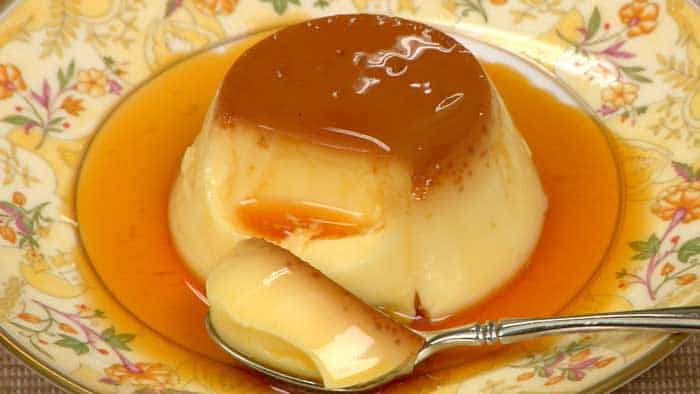
Hand mixer to the rescue
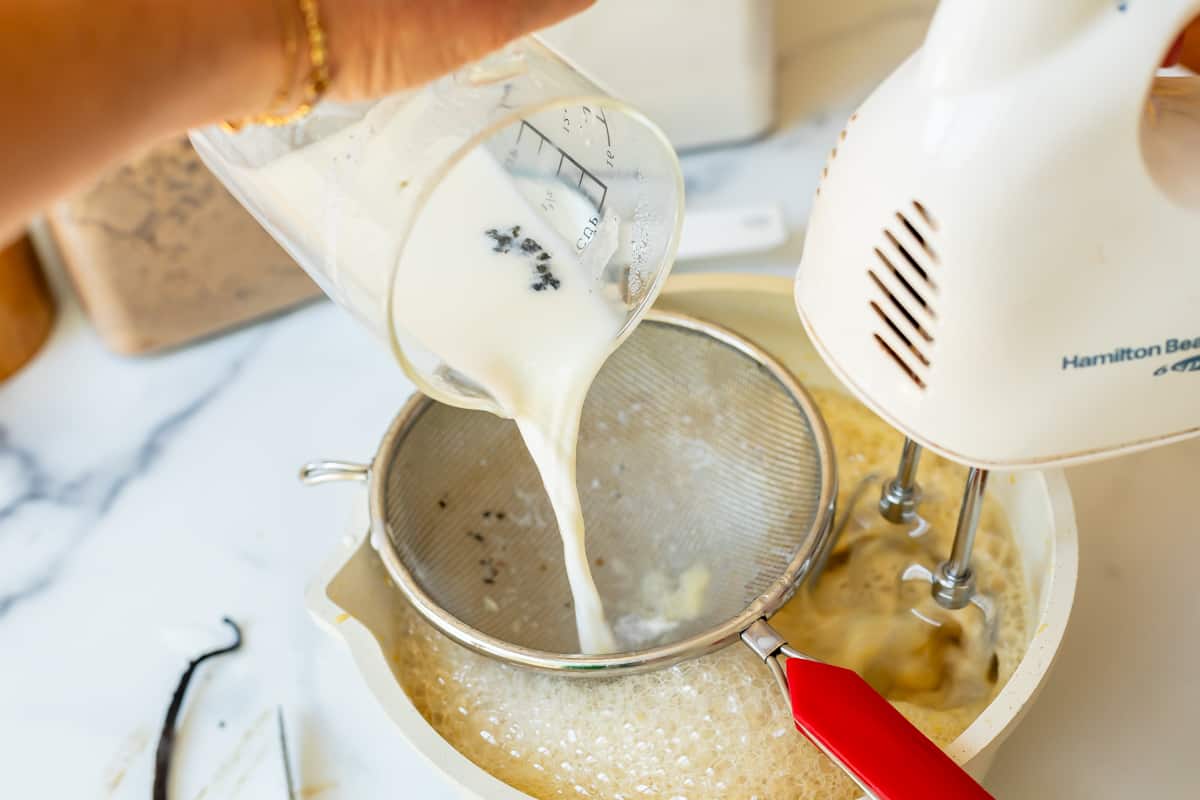
All we really need to temper the eggs is hot liquid. So instead of cooking our milk and cornstarch, breaking the yolks into a separate bowl, and transferring some of the hot milk mixture to our eggs to heat them up slowly (I’m confused just reading that sentence), we’re heating just the milk in a glass measuring cup, then pouring it into the egg yolks with the hand mixer running. This prevents our eggs from curdling, and heats the eggs slowly, exactly what we are trying to achieve. And as a bonus, we don’t have to get a whole other bowl dirty. This pudding is made start to finish in one pot. Don’t you just love me?
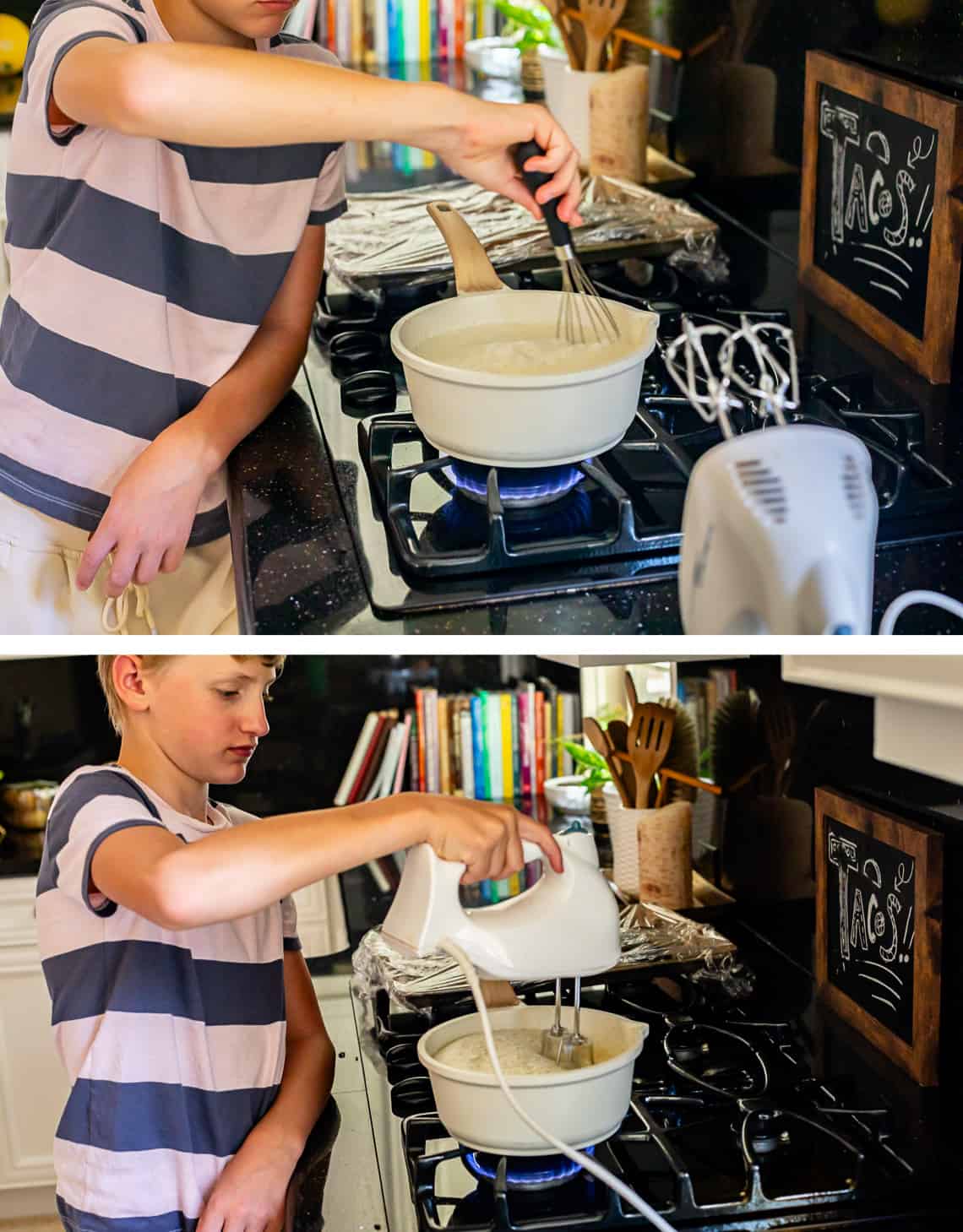
Once you have used a hand mixer to beat in the hot milk, transfer the whole business onto the stove; we are finally going to turn on the heat. Set the pan over medium heat and switch to using a whisk (but keep your mixer nearby). You need to stick around and whisk pretty much constantly.
Make sure to dig the whisk into the corners and scrape down the sides, to make sure you don’t get any lumps. I love using a flat whisk particularly for pudding, to get in the corners.
The pudding will only take about 3-5 minutes to come to a boil; once you see bubbles popping on the surface, cook for about 15-45 seconds, until your whisk makes marks that stay in the pudding when dragged across the top.
Turn off the heat and beat the pudding with the mixer one more time, to beat in air and make the texture fluffy and light. No sad heavy pudding please.
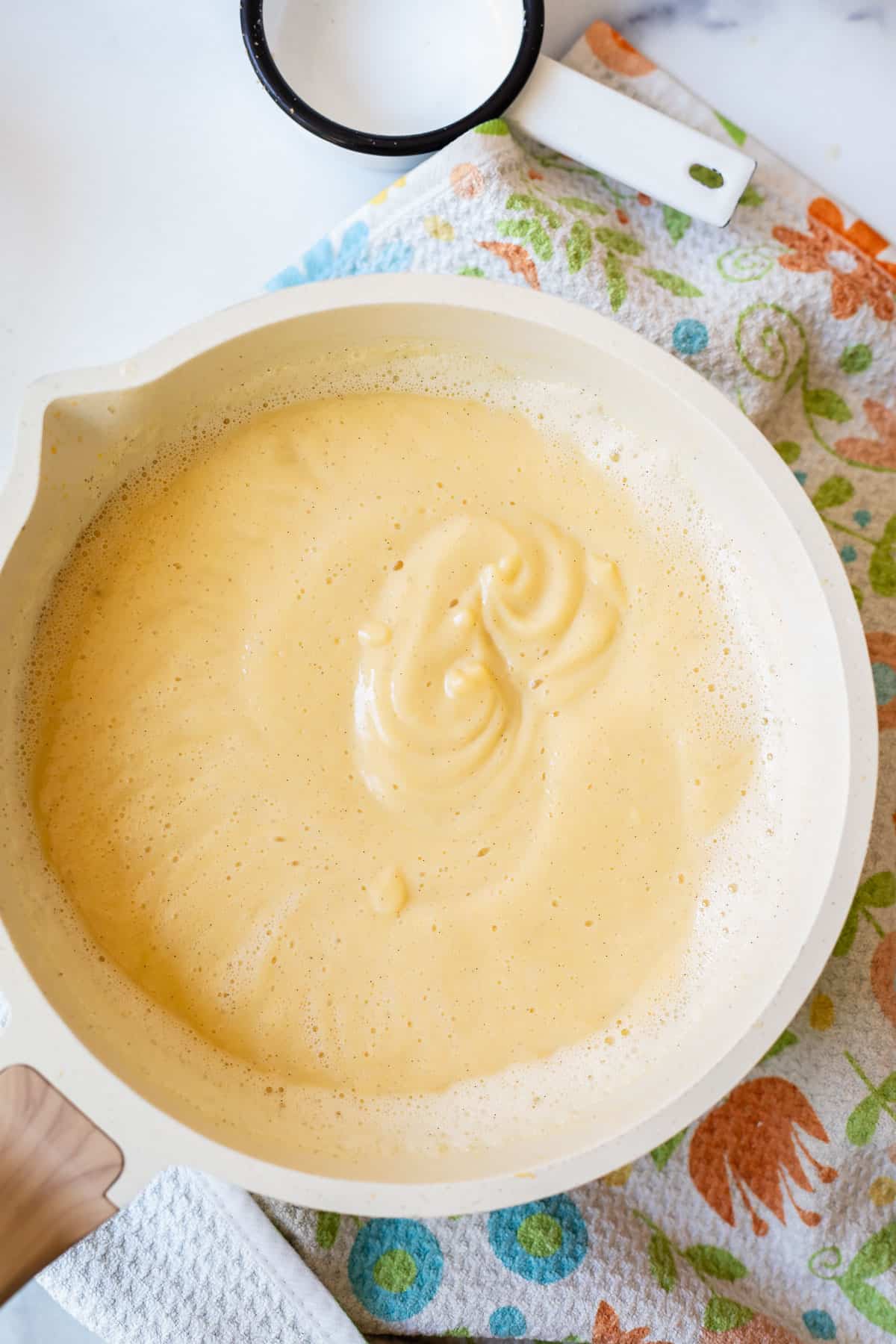
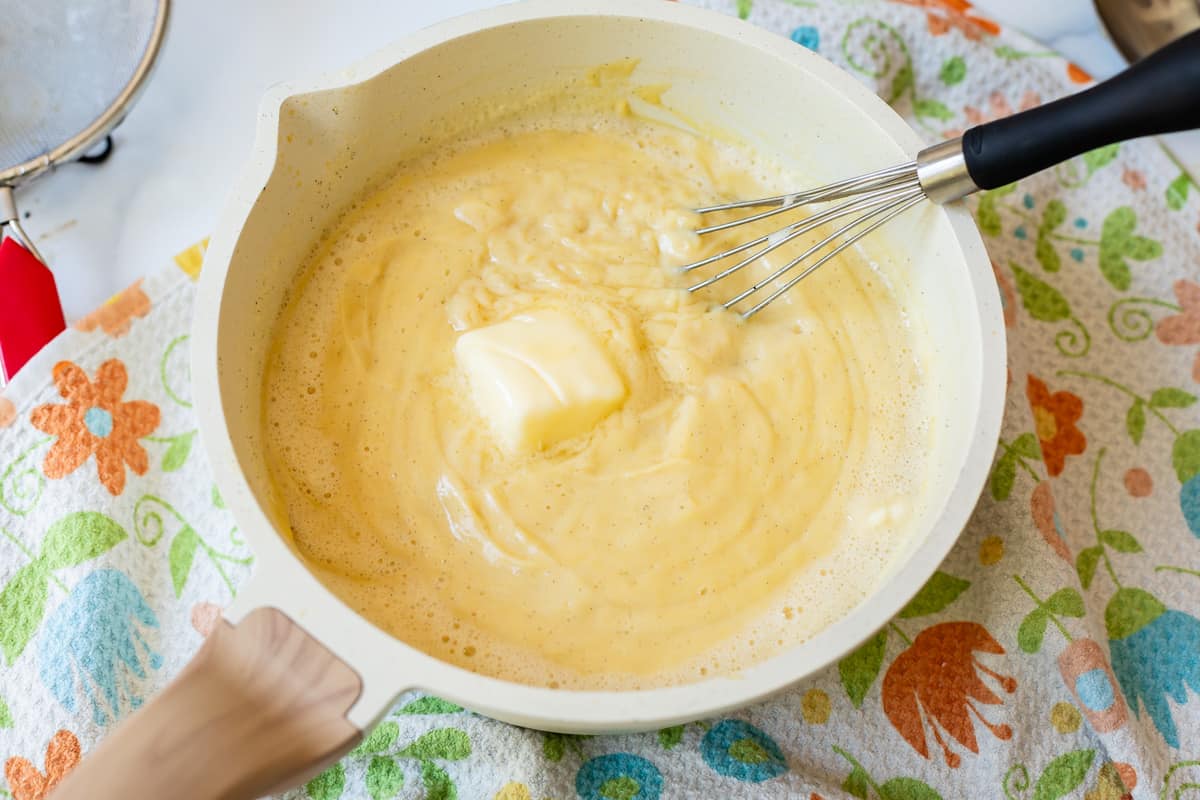
DON’T forget to add in a couple tablespoons of butter at the end. This is not only for the fantastic flavor it adds, but it also smooths out the pudding, making it glossy and shiny and homogenous. (This is the point where you would add regular vanilla extract, if you skipped the bean)
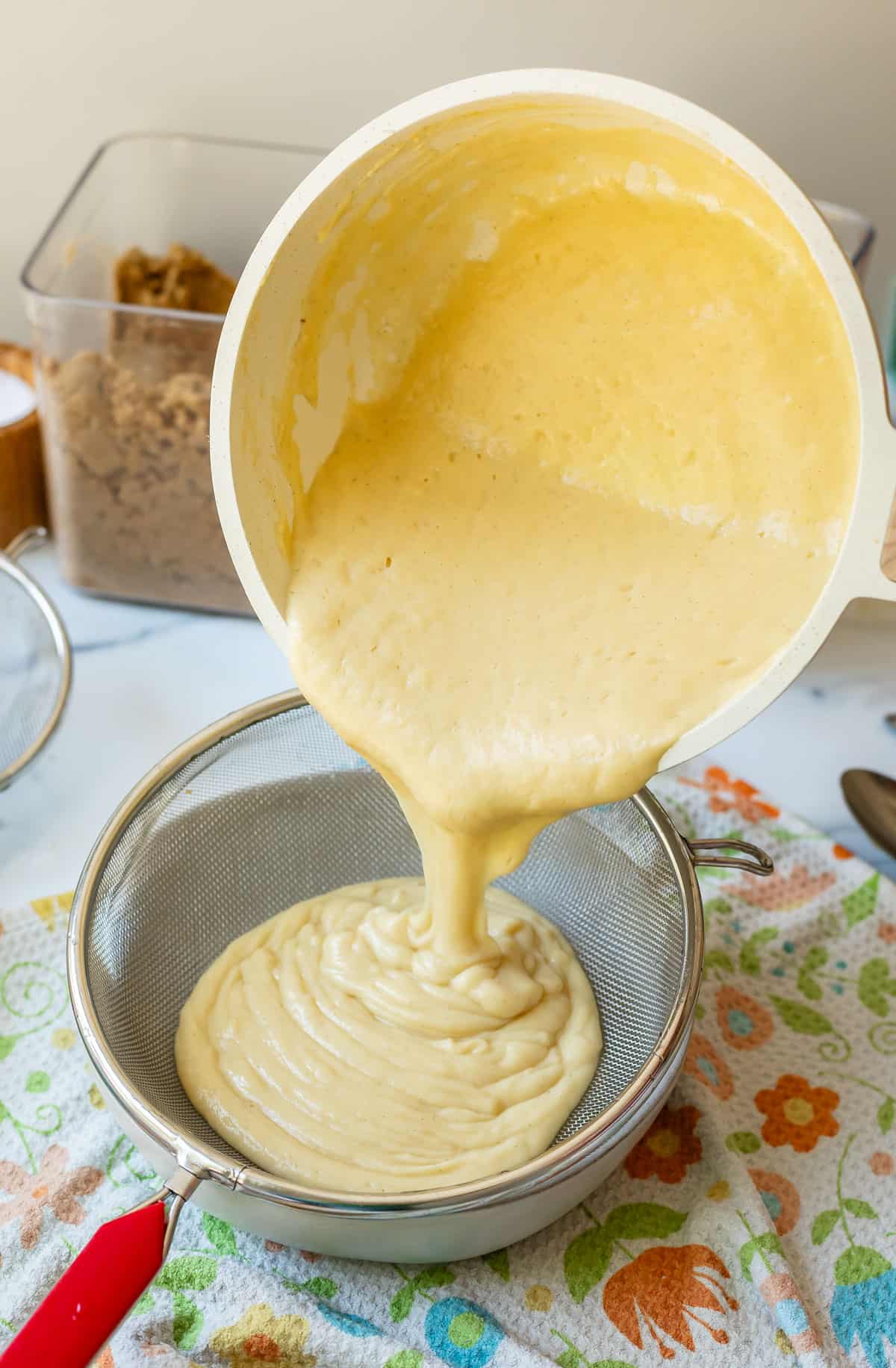
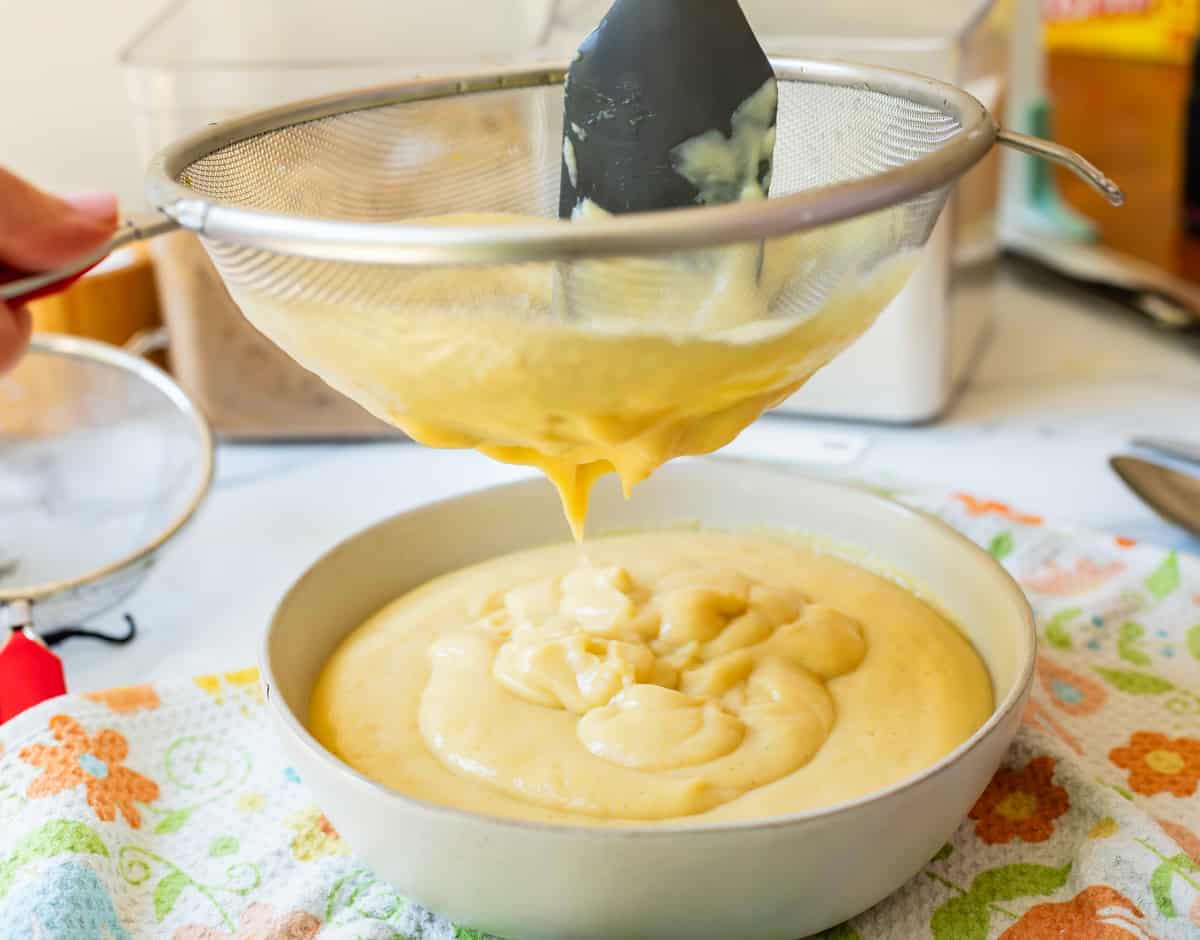
If you are a texture-is-everything person, take the time to strain your pudding through a sieve. It will get out any tiny bits of egg protein that cooked into hard whites. Honestly, even if you won the whisking Olympics, it’s nearly impossible not to have a few of these bits when making pudding, (the electric mixture does help minimize this though.) Straining solves the problem entirely if you want the smoothest of smooth puddings.
THIS is the moment to snag a bite of hot steamy creamy pudding my friends.
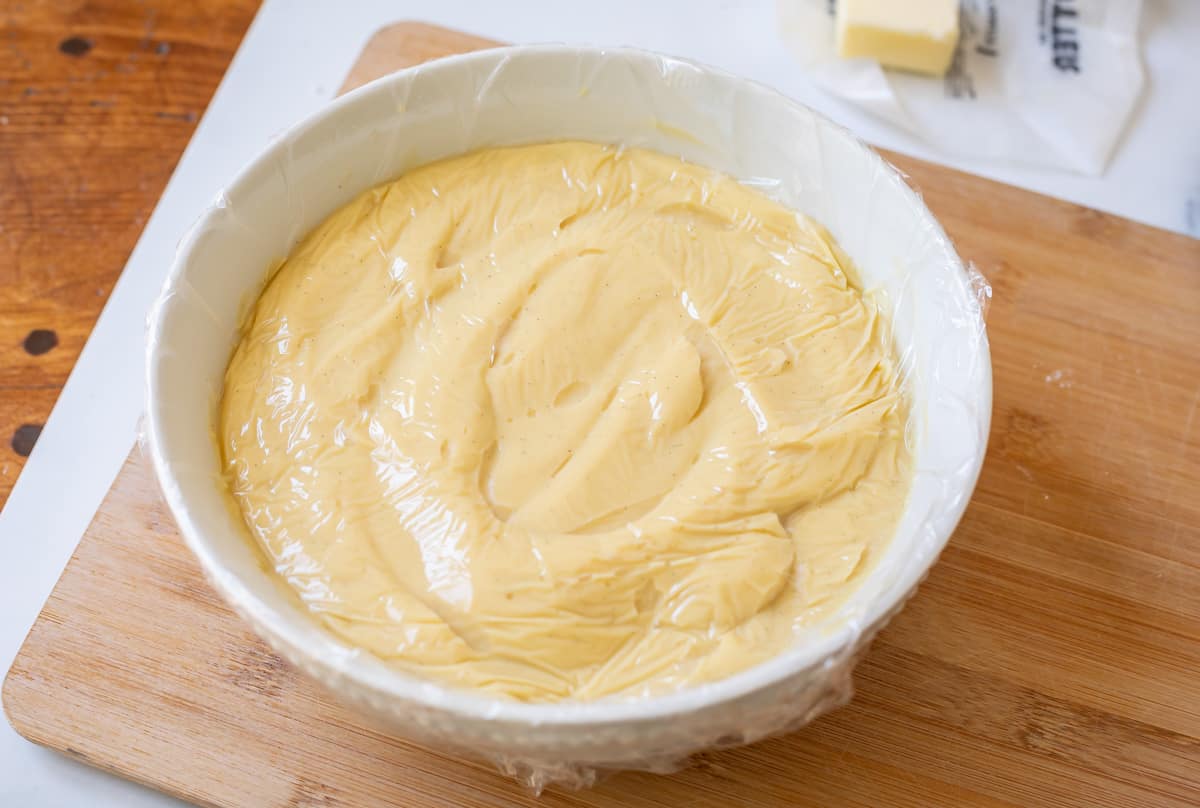
Press plastic wrap directly onto the surface of your pudding right away. If you don’t, your pudding will form a film on top, then when you mix it in later you won’t have smooth pudding anymore.
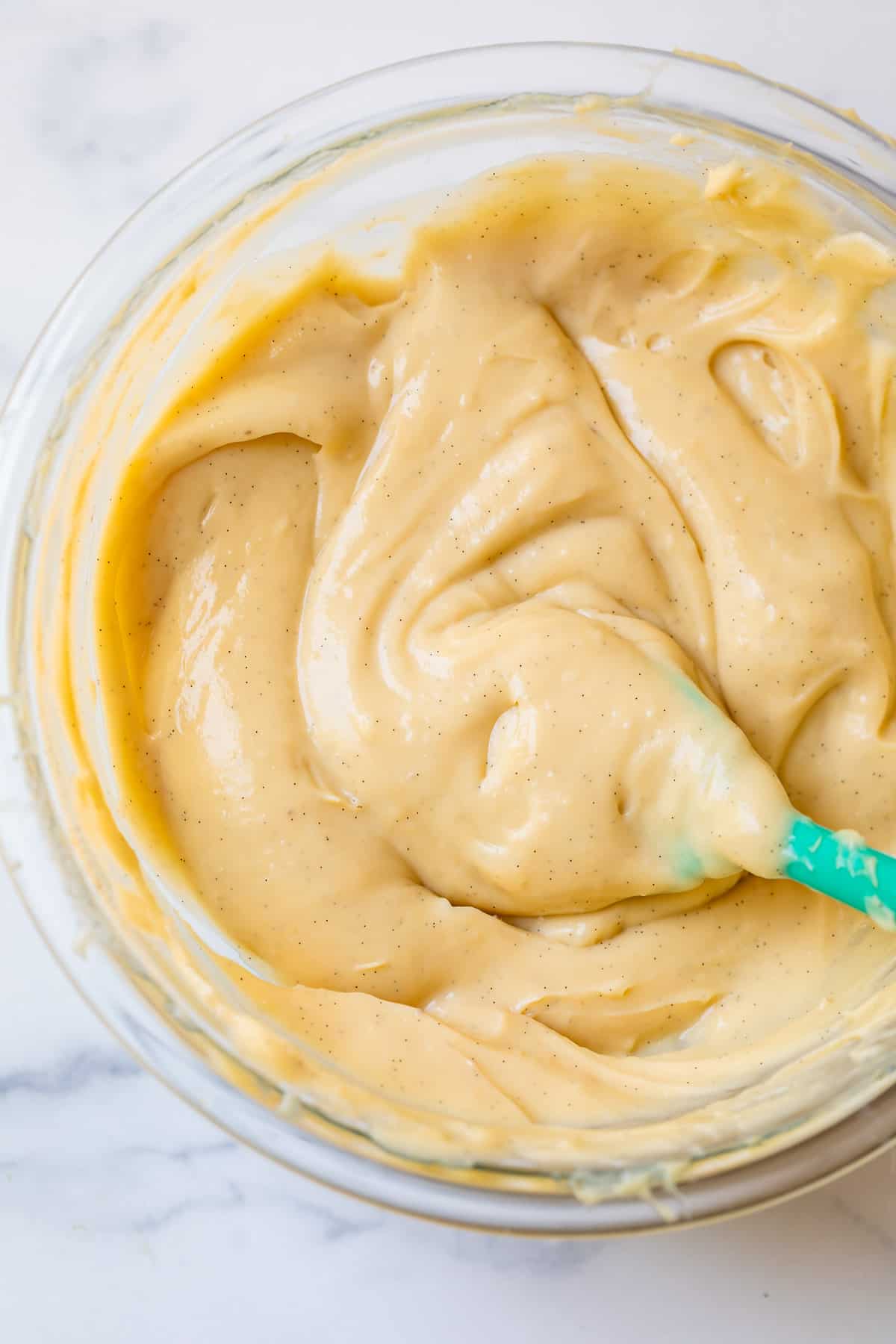
Chill for 2-4 hours and voila! A delightful pudding treat just for you! Be sure you whisk it one more time really well before serving.
Tempering Eggs is the Worst
I hate traditional egg tempering and think it’s the stupidest method of all time. I refuse to participate lately. It’s not that I’ve messed it up one too many times (it’s not hard, really) you just almost always need full attention and 3 hands, which I rarely have. The 3 hands might even be easier to finagle than the full attention, to be perfectly honest, especially since (somehow??) I have a fully competent tween in the house these days named Charlotte. (She is an excellent 3rd hand and no charlatan let me tell you)
BUT. Traditional tempering involves pouring hot liquid with one hand, whisking as if your life depended on it with the other hand, and then dumping the hot liquid back into a boiling pot that you really should have been stirring the whole time, even though you were busy with the tempering process (3rd hand, see?) Because you lack said appendage, your egg proteins harden up in your absence, resulting in little bits of cooked egg in the custard; not the smooth dreamy creamy texture we’re going for.
How It’s Made – Tapioca Pudding
FAQ
What makes instant pudding?
Is pudding made of eggs?
Is Jello pudding real pudding?
How is pudding made?
The process of making pudding can vary depending on the type of pudding and the recipe being used. Some puddings are made on the stovetop while others are cooked in the oven, with different ingredients being used to create unique flavor combinations.
What is the recipe for bread pudding with mixed spice?
Ingredients 3 eggs 1 and 1/4 cup of sugar 2 tablespoons vanilla essence 1 coffee spoon of nutmeg 1 teaspoon cinnamon powder 100 g of walnuts 100 g unsalted butter 2 tea cups of milk 6 stale French bread 200 g of raisins zest of 1 lemon Method of preparation In a bowl, place the eggs and beat until frothy. Add sugar, vanilla, spices, nuts, butter, milk and mix well. Add the pieces of bread, the raisins, the lemon zest and mix until the pieces of bread start to break up. Transfer to a greased shape and sprinkled with sugar. Bake in a preheated oven at 180°C for twenty minutes.
What is homemade pudding?
Homemade pudding is truly a custard made with milk, egg yolks and cornstarch (to thicken). Once you learn a basic pudding recipe or technique, the sky is the limit. You can try new flavors like chocolate or peanut butter, or you can throw the pudding in a pie crust and call it a cream pie.
What is the science behind Pudding making?
The science behind pudding making focuses on how each ingredient works together to create a smooth and creamy texture. Pudding is essentially a mixture of milk, sugar, and a thickening agent such as cornstarch or flour. The thickening agent acts as a binding agent that helps to give the pudding its characteristic consistency.
